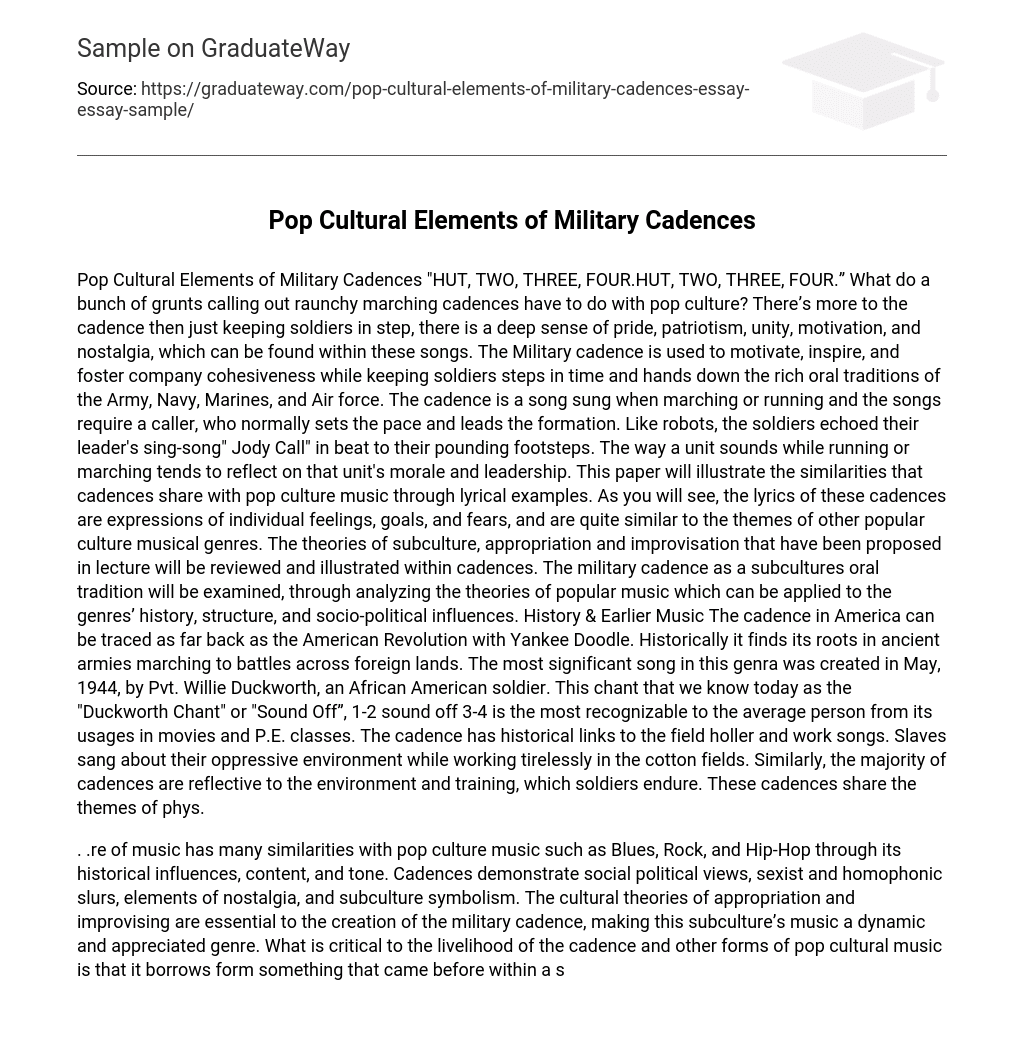The pop cultural elements of military cadences involve more than just soldiers marching and calling out raunchy songs. These cadences encompass a sense of pride, patriotism, unity, motivation, and nostalgia. They serve to motivate and inspire soldiers, while also fostering camaraderie within military units. By keeping soldiers in sync and passing down oral traditions, cadences hold a significant role in the Army, Navy, Marines, and Air Force. Similar to pop culture music, cadences are sung while marching or running and require a caller to set the pace and lead the formation. The way a unit sounds while in motion reflects its morale and leadership. This paper will explore the similarities between cadences and popular music by examining their lyrical content. Cadence lyrics are expressions of individual emotions, aspirations, and fears, mirroring themes often found in other genres of popular culture music. Throughout this analysis, the theories of subculture, appropriation, and improvisation discussed in lecture will be applied to cadences as well.The analysis of the military cadence as an oral tradition within subcultures will be explored by studying the theories of popular music and their application to the historical development, structure, and socio-political influences of this genre. The cadence has a long history dating back to the American Revolution when it was heard in the form of Yankee Doodle. It can also be traced back to ancient armies marching into battle in foreign lands. One of the most important songs in this genre is the “Duckworth Chant” or “Sound Off,” which was created by African American soldier Pvt. Willie Duckworth in May 1944. This chant is widely recognized due to its use in movies and physical education classes. The cadence has historical connections to field hollers and work songs, as slaves used song to express their struggle in oppressive environments while working on cotton fields. Similarly, many cadences reflect the training and environment that soldiers endure. These cadences often share themes related to physical exertion and motivation.
The music of the Military cadence shares many similarities with popular culture music such as Blues, Rock, and Hip-Hop in terms of historical influences, content, and tone. These cadences express social and political views, contain sexist and homophobic slurs, evoke nostalgia, and symbolize subcultures. The cultural concepts of appropriation and improvisation are crucial in the creation of military cadences, making them a dynamic and valued genre within this subculture. It is important to note that the cadence, like other forms of popular music, borrows from what came before in a specific social and cultural context. Unlike mainstream music heard in class, the cadence remains hidden within a subculture and does not play on mainstream radio or appear on MTV. Instead, it thrives on military training grounds and resonates in the hearts and minds of soldiers as they run, march, and embody the legacy and oral traditions of the US Military into the 21st century. All Cadence Examples Courtesy of US ARMY Marching and RUNNING CADENCES: http://cadence.armystudyguide.com/list/index.html





